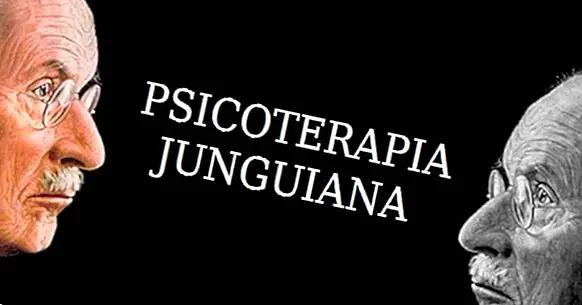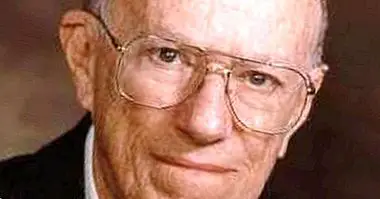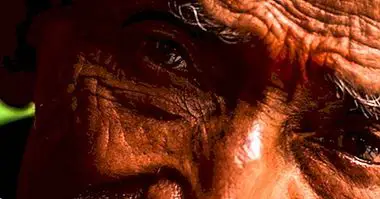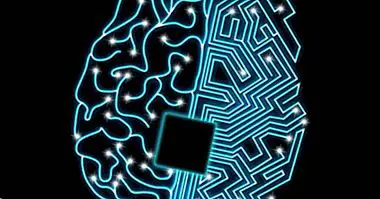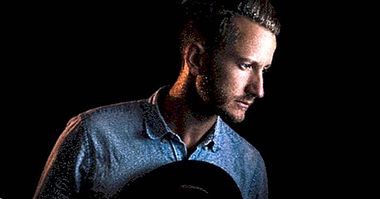Jungian Psychotherapy: between the symbolic and the imagination
One does not attain enlightenment by fantasizing about the light but by becoming aware of the darkness
-Carl Jung
Inside the different psychoanalytic and psychotherapeutic schools that emerged from the approaches of Sigmund Freud, and that sometimes are included under the term deep psychology (Psychoanalysis, Adler's individual psychology and Jungian analytical psychology) share the premise of the existence of a psychic substrate containing unconscious factors that condition and determine the ways of thinking, feeling and acting of individuals .
The unconscious: repressed desires and collective patterns
For Freudian psychoanalysis, the unconscious is a conglomeration of fantasies and desires that have been repressed by the individual in his process of adaptation to the social sphere . Therefore, it refers to contents related to the personal history of the individual, giving special importance to the memory to link with the parental figures.
The Swiss psychiatrist Carl Jung, creator of analytical psychology, is partly in agreement with this budget but argues that in addition to the biographical contents, in the unconscious it is also possible to identify elements that are part of the phylogenetic history of humanity . It proposes then that in addition to the personal unconscious, there is a collective unconscious composed of prototypes of experiences and behaviors shared by all human beings as a species.
The archetypes in the collective unconscious
These patterns of behavior, which Jung called archetypes, are closely related to the instincts, insofar as they act as stimuli that compel us to perform certain behaviors and promote reactions typical before various circumstances of our lives (emancipate ourselves from parents, form a family, have offspring, seek sustenance, appropriate a territory, participate in the collective, transform the social order, death).
Unlike the instincts, which are drives with a relatively closed and concrete circuit, the archetypes behave in an open and symbolic way ; However, its non-realization is also a source of discomfort and frustration.
Jung argues that it is possible to infer the existence of archetypes from their manifestations, one of which are the typical dramatic images and structures that can be found, with different cultural clothes, in the mythological and fantastic narratives of different places and times. .
Myths show us how humanity has faced different critical situations, and although some of them are thousands of years old, they continue to resonate and have an impact on our psyche since the challenges they allude to continue to accompany us.
Jung stresses that it is not possible on many occasions to adduce direct or indirect contact between peoples to explain the structural similarities of the myths. It is also relevant that these dramas and typical characters also arise spontaneously in psychotic delusions and hallucinations, as well as in altered states of consciousness as an effect of meditative practices or by the ingestion of psychedelic substances. Some dreams whose contents can not be related to biographical aspects can also be an expression of archetypal images.
The archetype of the solar hero
Freud and Jung not only distanced themselves by their different conceptions regarding the unconscious, but also for his statements about the nature of the fundamental energy that moves human beings : the libido.
As is well known, libido is, according to Freud, of a sexual nature, while for Jung, sexuality is only one of the manifestations of a much broader and more encompassing vital energy. Jung describes the libido then as a creative energy, which is the origin and engine of the universe . This energy manifests itself in human beings as a yearning for transcendence, for realization, for the broadening of consciousness. Jung found that this process of manifestation and unfolding of the vital energy manifests itself mythically through the archetype of the solar hero. This archetype that is the prototype of many ancient and contemporary stories in which the transformation of the hero is narrated (The odyssey, Star Wars, The Lord of the rings)
Through a series of journeys and adventures (to undertake a journey, fight with the dragon, descent to the underworld, death, rebirth), and encounter and confrontation with other archetypes (shadow, animus- anima, old wise, the great mother ) the hero enters into relationship with the forces of the underworld (the unconscious,), finds the treasure sought and returns to his place of origin to share the "light", wisdom, with his people.
Jung proposes to understand this mythical structure, as a projection of a psychic process of transformation and evolution to which we are called all human beings . Each human soul is forced to confront a series of circumstances that lead it to manifest its vocation, its particular call, its singular contribution to the collective, to the world. It manifests as a yearning for knowledge, for overcoming, for totality. This evolutionary path I call the process of individuation and is also considered as a symbol of the gradual transformation of the ego in its confrontation and adaptation to the forces of the unconscious and the external world.
Affective complexes
The archetypes are humanized in individuals from what Jung called the personal affective complexes. The complexes besides being imbued by the archetypes, they are nourished by our personal experiences . They can be considered as a set of images and representations, emotionally charged, around a common theme (relationship with the father or mother, power, eroticism, etc.)
Different circumstances of our life constellate, that is, make certain complex more important. A constellated complex It alters our conscious perception and will, coloring it with the strokes of the corresponding archetypes added to the previous experiences with respect to the same theme. Ancient demonic possessions and multiple personality disorders are expressions of highly constellated complexes. In these cases they behave as massive invasions of the unconscious that oppress and nullify the functions of the ego and consciousness.
The complexes are expressed in our psyche as constraints, needs, points of view, emotional reactions, feelings of admiration or disproportionate contempt, obsessive ideas. They have the faculty to personify themselves in our dreams, and to generate events and circumstances in the physical world with analogous meanings (somatizations, accidents, encounters with people, repetition of the finished type of relationship). The externalization capacity of archetypes and complexes is the basis of the phenomenon described by Jung as synchronicity.
Affective complexes they are considered the constituent particles of the unconscious psyche therefore not only part of the scope of psychopathology . They work as if in our house they lived pets, that if we ignore or ignore them, sooner or later they will end up going against us, causing us multiple havoc. The alternative is to get in touch with them, pay attention to their needs, so that with time and effort we somehow manage to domesticate them, being able to even make use of their potential resources. The unconscious, whether we like it or not, is going to act in us, so the most appropriate thing is to enter into its mysteries
This dialogue with our complexes, with our interior characters, which as we saw are the expression of the drama towards the realization of our deepest self, requires the deployment of a symbolic attitude through imagination and creativity.
Imagination and creativity as a dialogue with the unconscious
The imagination has been reviled by the rationalist and materialist thought since the Enlightenment, considering it with no value to obtain valid and productive knowledge. Jung, however, joins the hermetic and phenomenological current that recognizes the scope of the imaginary, which includes myths, dreams and fantasies as elements that allow access to the paradoxical complexity of the psyche, to the depths of human nature and above all to that other sublime reality that inhabits and conditions us.
Imagination
The imagination is recognized as the symbolic property of uniting and reconciling polarities; to express, suggest and evoke the unlearnable; to comprehensively approach unclassifiable phenomena through concept and rationality. The analyst James Hillman proposes to the imagination as the language of the soul.
The imaginary manifests spontaneously in dreams and that is why its interpretation is a fundamental part of Jungian psychotherapy. As well it is possible to artificially induce the imaginary in the therapeutic space through the technique of active imagination . This consists in giving the opportunity to express oneself to the contents of the unconscious, making use of its capacity for personification.
It is then proposed to get in touch with our interior characters, listen to them with attention and rigor, interacting and conversing with them as if they were real entities.
Ways to approach the unconscious
Our inner characters can be evoked through the image of a dream, an intense emotion, a symptom. Each one of us has a modality that facilitates this communication. There are people who can hear voices, or perceive interior images, some are expressed through body movements in a kind of dance. For others, contact with the unconscious is possible through automatic writing, a technique used by the Surrealists.
Jung differentiates idle fantasies with active imagination, emphasizing that in the latter, the ego assumes an active attitude, that is, it does not passively and submissively accept the voices and images of the unconscious , but it interpellates them . The active attitude implies supporting and maintaining tension with the unconscious, allowing what it calls the transcendent function to emerge, that is, a new birth, the emergence of a new attitude, product of that confrontation.
The transcendent function of the psyche is what makes possible the conciliation of apparently irreconcilable opposites. It is the emergence of a third element or perspective, which includes and integrates the elements that have been in dispute. It is a process of conflict, negotiation and transitory agreements.
The technique of active imagination is often used in advanced stages of analysis, since it requires a structured ego that supports the tension of the opposites and does not succumb to a dissociation or identification with some of the contents of the unconscious.
Jung stresses that taking the unconscious seriously does not mean taking it literally, but giving it credit, giving it the opportunity to cooperate with the conscience, instead of automatically disturbing it. This cooperation of the unconscious is related to the self-regulating principle of the psyche, fundamental concept in the Jungian perspective.
Imagination as facilitator of the self-regulating mechanism of the psyche
The psyche is posed as a dynamic system of opposing forces (conscious-unconscious, progression-progression of the libido, matter-logos), with an intrinsic tendency to maintain a balance. This self-regulating mechanism implies a permanent interplay of compensation and complementarity between the psychic components.
The state of psychic equilibrium is altered in a regular way by stimuli coming from the lability of the internal and external world. This alteration it demands modifications tending to adapt to the new requirements, promoting in the psyche a transformation to stages of increasing complexity and integrality. Neurotic symptoms (obsessions, depression, anxiety, accidents, somatizations, repetition of relationship patterns, self-sabotage) are expressions of an attempt by the unconscious psyche in the search for this higher equilibrium state. An attempt to create awareness from the stumbles.
The dialogue with the unconscious psyche through the imagination allows the self-regulating mechanism of the psyche to act without having to resort to symptomatic phenomena. It is in some way anticipating the events and avoiding that Jungian sentence by which, "everything that is not made conscious will be lived abroad as a destiny".
Self-regulation: one of the keys of the unconscious
The self-regulation mechanism of the psyche is called by the analyst James Hillman as our inner daimon. With this Hellenic concept he intends to allude to that force that leads us through good and bad to express our vocation, our particular call . Imagination and creativity are then a means to interpret the winks of fate, the signs of our daimon.
The development of the symbolic attitude that is intended to foster Jungian psychotherapy through the imagination, allows us to escape from the narrow literality of the facts. It gives us access to paradoxical subaltern logics. It links us to the profound polysemy of events through symbols, analogies and correspondences.
The symbolic attitude also It broadens our sensitivity and our willingness to respond constructively to all that diversity of life brings us together and to integrate and coexist with our somber aspects. The dialogue with the unconscious allows us to become co-creators of our reality and not simply slaves or victims of circumstances.
Bibliographic references:
- Hillman, J. (1998). The soul code. Barcelona, Martínez Roca.
- Jung, C. G. (1981). Archetypes and collective unconscious. Barcelona, Paidos.
- Jung, C.G (1993) Structure and dynamics of the psyche. Editorial Paidós,
- Buenos Aires.
- Jung, C. G. (2008). The complexes and the unconscious. Madrid, Alliance.

